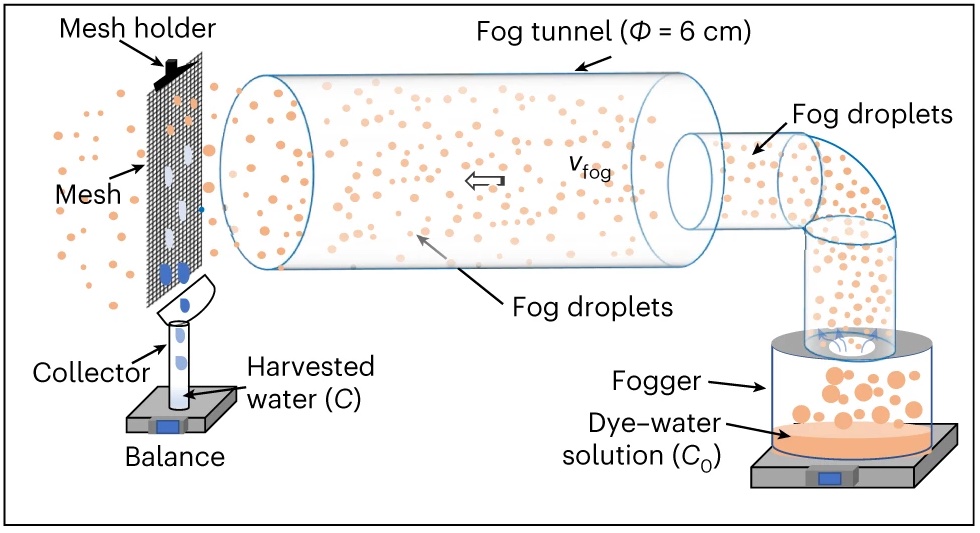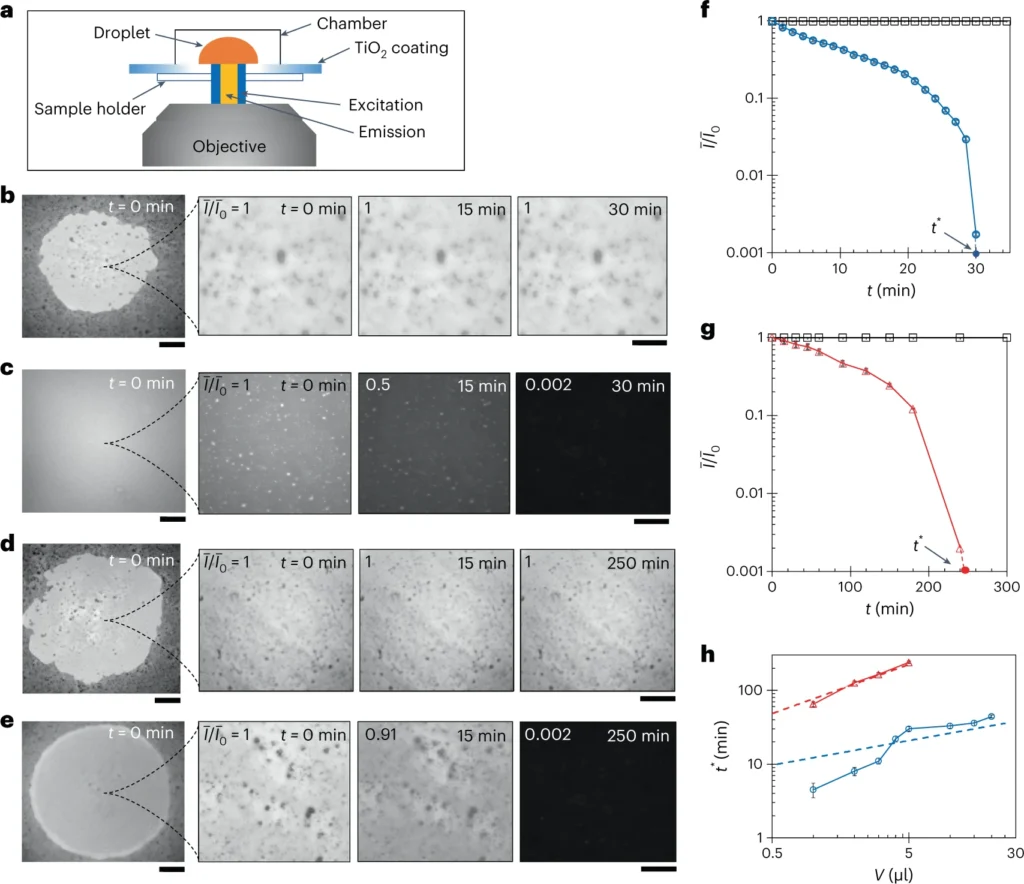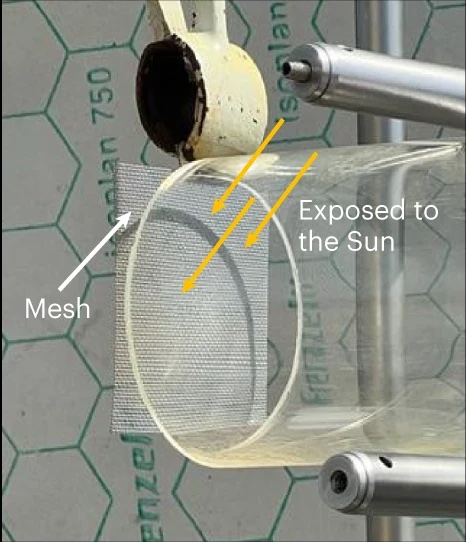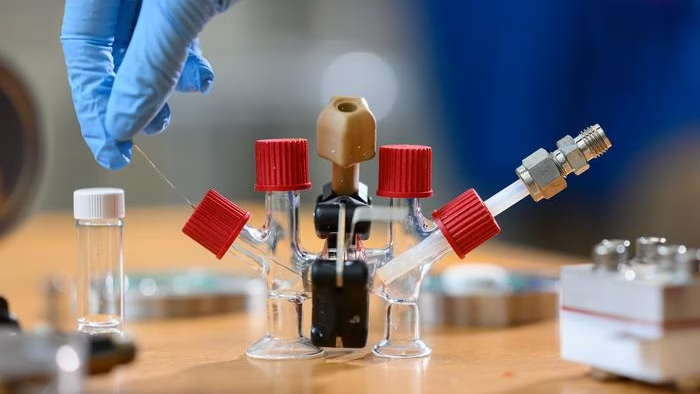From ETH Zurich 18/08/23

In countries such as Peru, Bolivia and Chile, it’s not uncommon for people who live in foggy areas to hang up nets to catch droplets of water.
The same is true of Morocco and Oman.
These droplets then trickle down the mesh and are collected to provide water for drinking, cooking and washing.
As much as several hundred litres of water can be harvested daily using a fog net only a few square metres in area.
For regions with little rain or spring water, this can be a blessing.
However, one crucial drawback with this method is atmospheric pollution, since the hazardous substances also end up in the droplets of water.
In many major cities, the air is so polluted that any water harvested from fog isn’t clean enough to be used untreated.
Researchers at ETH Zurich have now developed a method that collects water from fog and simultaneously purifies it.

This uses a close-mesh lattice of metal wire coated with a mixture of specially selected polymers and titanium dioxide.
The polymers ensure that droplets of water collect efficiently on the mesh and then trickle down as quickly as possible into a container before they can be blown off by the wind.
The titanium dioxide acts as a chemical catalyst, breaking down the molecules of many of the organic pollutants contained in the droplets.
“Our system not only harvests fog but also treats the harvested water, meaning it can be used in areas with atmospheric pollution,” Ritwick Ghosh explains.
A scientist at the Max Planck Institute for Polymer Research in Mainz, Ghosh conducted this project while on an extended guest stay at ETH Zurich.
During this time, he was a member of the group led by Thomas Schutzius, who has since taken up a post as professor at the University of California, Berkeley.
Once installed, the technology needs little or no maintenance.
Moreover, no energy is required apart from a small but regular dose of UV to regenerate the catalyst.

The new fog collector was tested in the lab and in a small pilot plant in Zurich.
Researchers were able to collect 8 percent of the water in artificially created fog and break down 94 percent of the organic compounds that had been added to it.
In addition to harvesting drinking water from fog, this technology could also be used to recover water used in cooling towers.
Past research by Ghosh focused on water recovery from cooling towers.
He would now like to advance this technology and explore marketable applications.
His hope is to make greater use of fog and steam as a hitherto underutilised source of water and thereby play a role in alleviating the scarcity of this vital resource.



